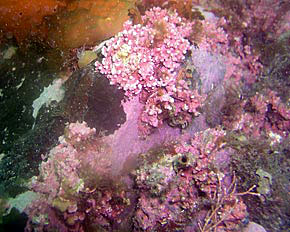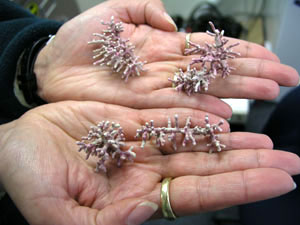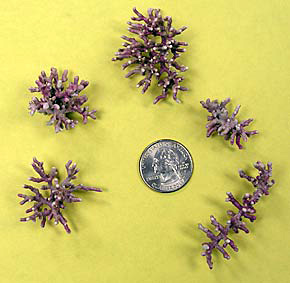 by Doug Schneider October 02, 2004
If not for a slippery strainer, marine scientists Katrin Iken and Brenda Konar would have missed making what has turned out to be an important discovery. This past June, the University of Alaska Fairbanks researchers, together with a team of graduate students, were aboard a chartered fishing vessel in Alaska's Prince William Sound. They were conducting a survey of the sound's marine life as part of a global study of ocean biodiversity. While sorting through buckets of marine creatures collected during scuba diving forays in the sound's shallow coastal waters, Iken says she accidentally dropped overboard a small tool called a sieve that's used to separate different-sized organisms. Katrin Iken said, "Between samples you have to rinse your sieve. So what you should do is get a bucket of water and rinse it. But I was a little lazy and I bent overboard and dunked it into the water. It somehow just slipped my hand." Iken was at first embarrassed by her rookie mistake. But within minutes, her embarrassment would turn to delight. Donning their scuba gear, Iken and Brenda Konar went into the water to retrieve the lost strainer. Konar picks up the story from there. Konar said, "We decided to go in and look for the sieve, and we dropped in, and it was right under the boat. But then I started to look around, and I saw all these little tumbleweeds everywhere. The more I started looking, the more I thought, there's a rhodolith bed here, and as far as I know, rhodoliths have never been described before in Alaska. We were shocked to see how many rhodoliths were down there." Konar and Iken had stumbled upon a bed of rhodoliths - a type of coralline red algae that deposits calcium carbonate within their cell walls to form hard structures that closely resemble beds of colorful coral.
Konar said, "Most of them were about the size of a ping-pong ball. They have lots of branches that come out from a centerpiece. They are almost like jacks sitting on the bottom, except that they are pink." Globally, rhodoliths fill an important niche in the marine ecosystem, serving as a transition habitat between rocky and sandy areas. They've been found throughout the world's oceans, including in the Arctic near Greenland and in waters off British Columbia. [Rhodolith distribution map - Courtesy Journal of Phycology.] But in her more than 15 years of diving in Alaska, Konar says she had never come across them. Konar said, "The exciting thing is that it's not only a new species but a whole new type of habitat." Unlike coral, rhodoliths don't attach themselves to the ocean floor. Rather, they drift like tiny marine tumbleweeds along the seafloor until they grow heavy enough to settle and form brightly colored beds. And while corals are animals that filter plankton and other organisms from the water for food, rhodoliths produce energy through photosynthesis. Konar said, "Rhodoliths have been found to be important as refuge in other areas of the world. I think it will be important to do some more exploring to find out how many of these beds there are, where they are, and what organisms associate with these beds, because it could be that they are an important nursery for species in our waters, too." Using a measuring tape, Konar and Iken calculated the bed to be more than 60 meters wide, or about 197 feet, and at least that much long.
About two dozen specimens were sent to Mexico, to a laboratory run by Rafael Riosmena-Rodriguez at the Autonomous University of Baja California in La Paz. Riosmena-Rodriguez is an internationally recognized marine taxonomist who specializes in identifying rhodoliths. Riosmena-Rodriguez said, "I think we have at least two species. One species is a worldwide species, very easy to identify. The other one is a potentially new species. The plant has very big conceptacles, the reproductive structures. And the thallus is very thin. This is something unique that you don't find in very many species." While they search for funding to look for more rhodolith beds, Konar, Iken, and Riosmena-Rodriguez will submit a scientific paper on their discovery to a marine journal. And if one of their rhodoliths turns out to be a new species, they'll have the honor of naming it. Katrin Iken already has one name in mind. Iken said, "The one that is ranking very high right now is 'sieve over the boatei.' But that's really more of a joke." Iken also has gotten over her initial embarrassment at having dropped an important tool overboard. Iken said, "Whenever I
drop something now I can say that I was just looking for a new
habitat or a new species."
This story is courtesy of Arctic
Science Journeys, a production of the Alaska Sea Grant Program
at the University of Alaska Fairbanks School of Fisheries and
Ocean Sciences. Related news:
|
|||||


